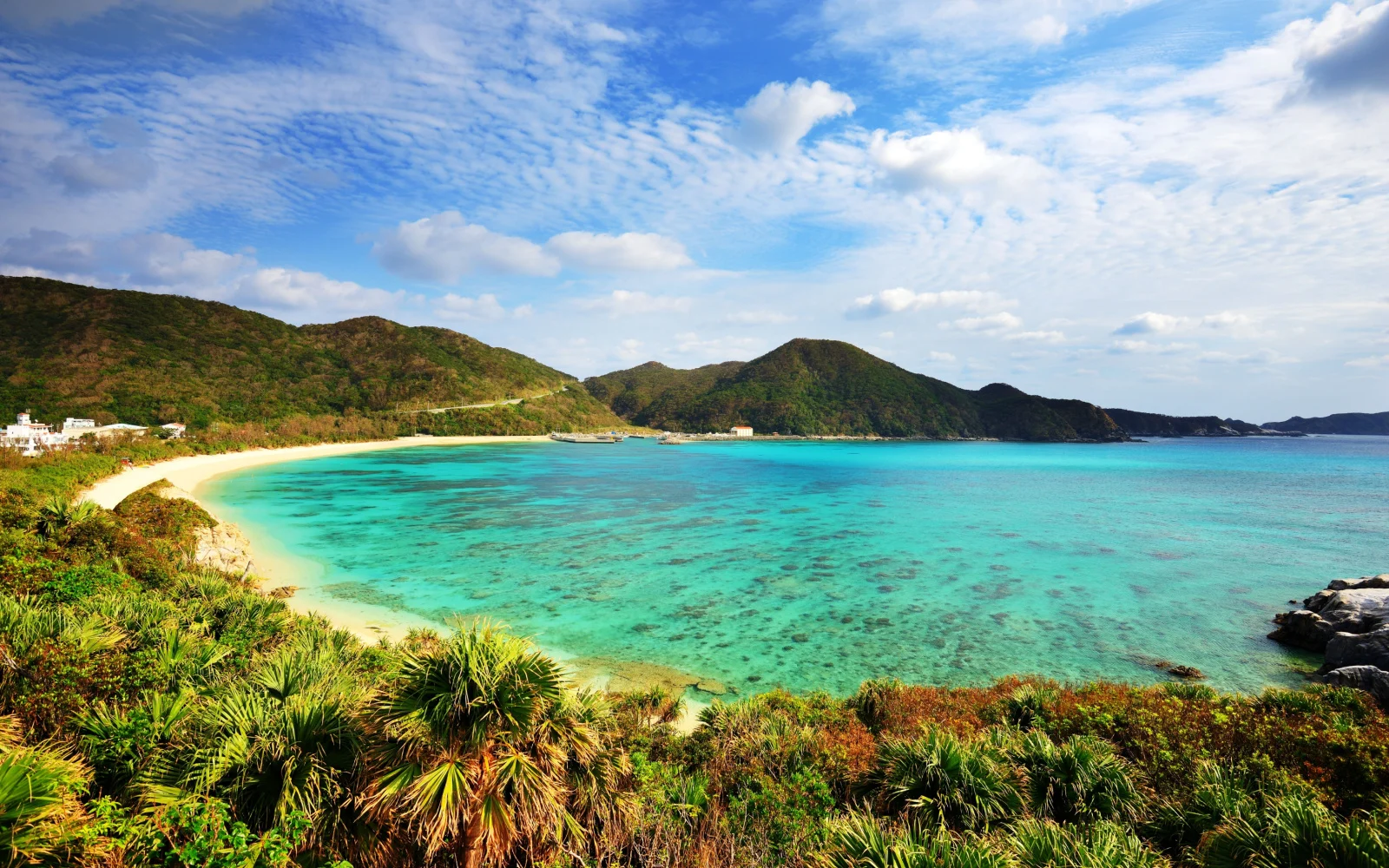What's the best time to visit Okinawa?
The best time to visit Okinawa is during the shoulder seasons of March, April, and October. These months offer delightful weather without the threat of typhoons and provide an opportunity to avoid the larger summer crowds.
In March and April, you can bask in the ideal beach weather, enjoy vibrant festivals, and witness captivating events. Meanwhile, October extends the pleasant climate, making it a fantastic choice for experiencing Okinawa’s charm without the summer rush.
Frequently referred to as the “Hawaii of Japan,” Okinawa should be on every traveler’s bucket list.
Whether you wish to escape the cold northern winters, see what this hidden gem has to offer, or you’re simply looking for a not-so-mainstream holiday getaway idea, Okinawa will be one of the most memorable destinations you’ve been to.
But when is the best time to visit Okinawa? Let’s find out together. We’ll cover the best time to visit, things worth considering, FAQ questions and events worth attending. Read on to learn all you need to know!
The Overall Best Time to Visit Okinawa
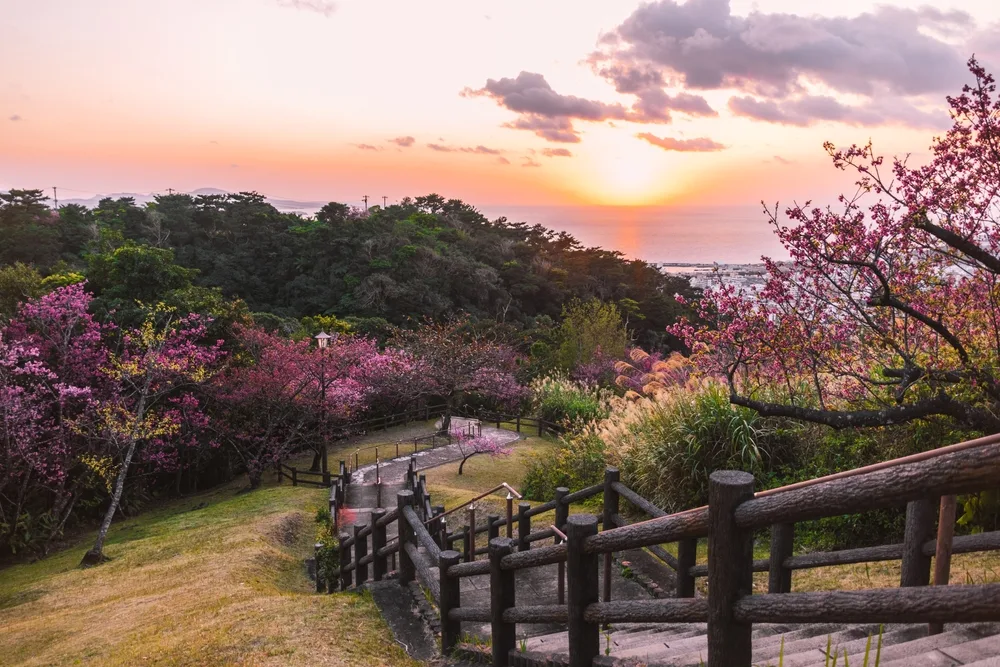
Wirestock Creators/Shutterstock
The best time to visit Okinawa is anytime in March, April, and/or October, months that are specifically out of the typhoon season, relatively speaking. In March and April, the temperatures in Okinawa range between averages of 76°F and 62°F.
These months are ideal for hitting the beach and avoiding the big summer crowds. Weather-wise, March is also suitable for hiking, golfing, or enjoying the fresh flower blossom.
In March, there’s also the Higashi Village Azalea Festival, where you can soak in more than 50,000 azaleas in shades of pink, purple, red, or white.
Then, there’s the Okinawa Zoo & Museum Flower Festival, where floral arrangements and numerous performances provide visitors with a mesmerizing experience. Lastly, March hosts the notable pottery bazaar at the yearly All-Okinawa Yachimun Pottery Market.
April weather begins enticing visitors even more, and there’s excitement in the air. The month’s perfect for beach-wandering, biking, as well as engaging in dynamic marine sports, such as paddleboarding or parasailing.
April’s fun continues long after the days are over with firefly watching after sunset. Do factor in that, in April, locals pay respect to their ancestors by going to the graveyards and engaging in a ritual called “shimi.”
This ritual means busy roads, especially those north of Naha. Don’t be surprised if you experience delays, so be ready to be flexible with your travel plans.
In terms of festivals and April events, mark your calendar for the Ryukyu Kaiensai Fireworks Festival. Watching the night skies light up in shimmering colors as fireworks explode one by one will be one of the most remarkable Okinawa experiences you can tick off of your bucket list.
For a fancy night out, head to the Okinawa International Movie Festival and choose some of the available local and international movie screenings.
Cheapest Time to Visit Okinawa
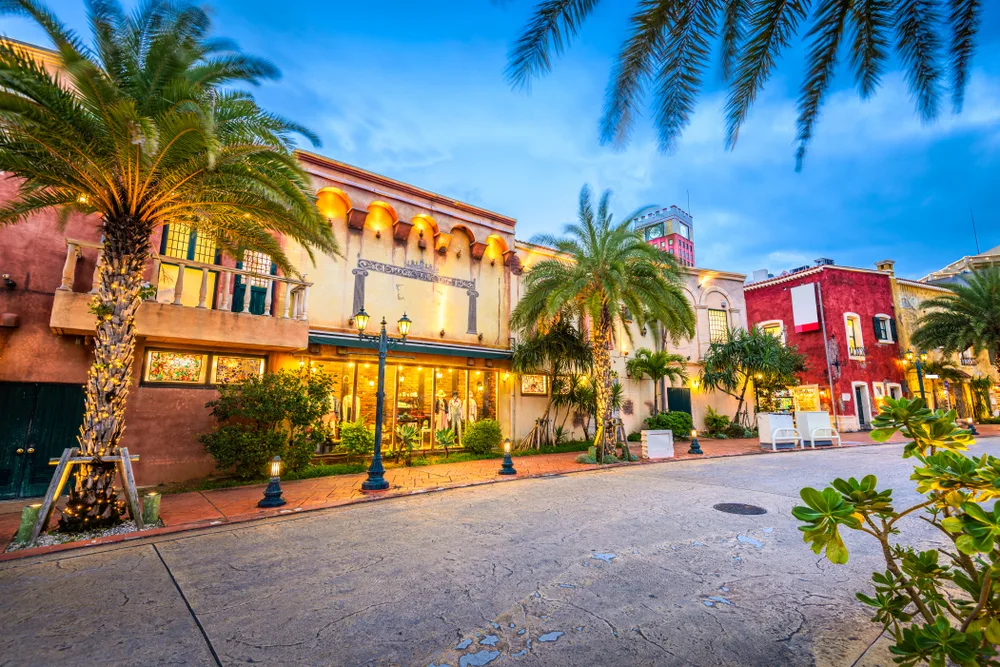
Sean Pavone/Shutterstock
The cheapest time to visit Okinawa is in the December–February period. These three months see temperatures varying between average highs of 71°F and average lows of 59°F.
As winter is a slow season in Okinawa and beaches and hotels aren’t crowded, certain businesses may have shorter working hours, while others may be completely closed.
Still, this is the time when you can find affordable hotel rates and cheap airfare tickets, so if you’re trying to stick to a budget, by all means, go for it. Although it’s winter, Okinawa enjoys a subtropical climate, and there’s rarely any snowfall.
As a result, you can still find plenty of enjoyable activities to take part in, such as sightseeing, biking, and the festive holiday atmosphere. With Christmas approaching, most resorts organize live music events.
To take the holiday atmosphere to the next level, consider attending the Ryukyu Lantern Festival. As a side note, if you’re a fan of running, join the Naha Marathon and race with more than 30,000 fellow runners.
January is all about whale-watching and starting the year with cherry blossoms (yes, the Sakura season begins early in Okinawa). To properly honor the arrival of the Sakura season, enjoy the blooms at the Motobu Yaedake Cherry Blossom Festival.
Water-based activities are still on, but you’ll need a wetsuit to make sure you’re comfortable. If you get chilly, you can always rely on indoor activities such as visiting aquariums or heading to local museums or pottery villages.
In February, the cherry blossoms are pretty much at their peak bloom, which makes Okinawa and its sites that much more beautiful (if that’s even possible).
This month allows for exploring castles, sacred sites, and villages without worrying about scalding and humid weather. Lastly, Being part of the Okinawa Flower Carnival, the Bougainvillea Fair paves the way for the spring flower celebration.
Least Busy Time to Visit Okinawa
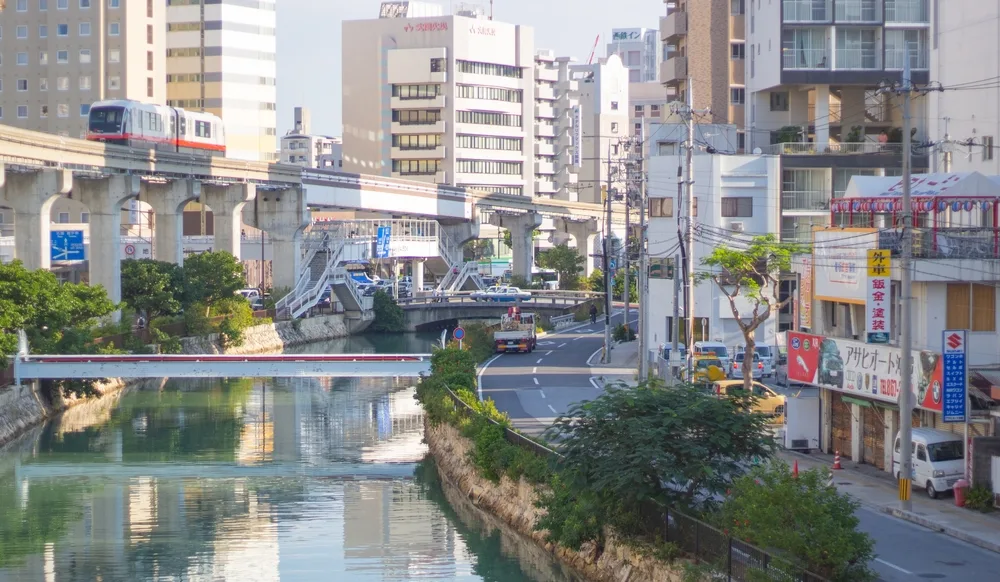
Okinawa, Japan – October 14, 2015: Morning landscape of the city of Okinawa/Mei Yi/Shutterstock
The least busy time to visit Okinawa is from late May to June and in September or October. In May and June, the temperatures vary between an average high of 86°F and an average low of 72°F.
One exception — while these shoulder months are generally not crowded as other periods, note that if you go during Golden Week, plan your itinerary well beforehand, as Okinawa gets quite busy.
Otherwise, May welcomes tourists with a plethora of culture-themed festivals and evenings that are neither cool nor hot. This makes nights in Okinawa perfect for night jungle tours, which are exactly as enchanting as they sound.
The Okuyambaru Carp Streamer Festival is all about flying carp streamers and engaging in traditional singing and dancing events.
Being the largest of all dragon boat festivals in Okinawa, the Naha Hari festival promises exciting races, playful boats, fireworks, food, and a lot of singing and dancing. Oh, and you can embark on a dragon boat if you wish to do so, too!
To avoid June’s rains, head to museums, do some shopping, and marvel at local traditional crafts. You might even opt for Okinawan dyeing workshops and learn all there is to know about bingata, an Okinawa-specific dyeing technique.
Don’t skip Okinawa’s traditional dance — eisa, organized each weekend beginning mid-June to August, accompanied by live drums. In September and October, the temperatures are much the same, ranging between 87°F and 74°F.
October invites visitors to hit the hiking trails, go kayaking, or celebrate karate’s official day (October 25) by taking part in a karate session or heading to the Okinawa Karate Kaikan.
Although Okinawa soba noodles are finger-licking any time of the year, in October, you’ll enjoy them much more, as October 17 is the official Okinawa Soba Day. So, relax in soba restaurants or join a soba-making workshop.
Encompassing days filled with traditional arts performances, the Tanadui Festival has been classified as an “Intangible Folk Cultural Property” of Japan by the government.
Finally, to wrap up October’s festival season, keep in mind the Shichi Festival. From stick fights to lion dances, guests can marvel at the abundance of performance ideas and fun activities.
Worst Time to Visit Okinawa
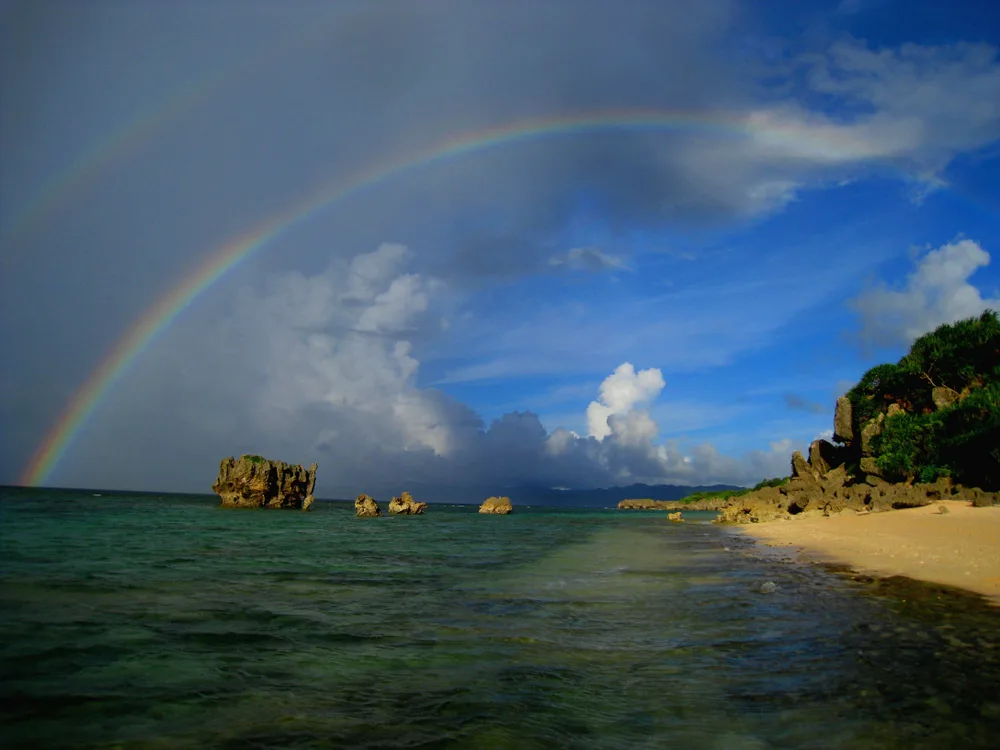
Kouri Island , Okinawa / Japan – July? ?26?, ?2012 Double Rainbow on Sunset Time in Kouri Island , Okinawa/Dan Giveon/Shutterstock
The worst time to visit Okinawa is during the typhoon season, which runs each year from July to September.
July and August see temperatures fluctuating between an average high of 89°F and an average lof of 80°F. The temperatures generally soar, and together with typhoons, they stand a chance of ruining the Okinawa plans you’ve been looking forward to so much.
That said, there’s nothing that a little flexibility in your itinerary can’t solve. Being open-minded and doing something as simple as opting for indoor activities when the weather’s bad goes a long way.
Honoring summer, the Nago Summer Festival awaits visitors with food stalls, live performances, and fireworks.
With more than 10,000 distinct fireworks exploding in the sky, the Ocean Expo Park Summer Festival is the largest fireworks festival in Okinawa. Those keen to enjoy Okinawa by night should head to the Festival of the Southern Island Stars.
Resembling the summer season, September is less about the upcoming autumn and more about allowing visitors to have that ideal late-summer trip they planned, bad weather notwithstanding.
You can still enjoy the sunshine and engage in outdoor recreational activities, such as horseback riding, hiking, and exploring the forest if the weather allows for it.
If you find yourself in Okinawa in September, head to the Itoman Great Tug-of-War contest and take part in an exhilarating competition. Celebrating the Okinawa LGBTQ+ community, Pink Dot Okinawa honors diversity and promotes solidarity by hosting many dance and music events.
Okinawa by Month: Climate & Activities
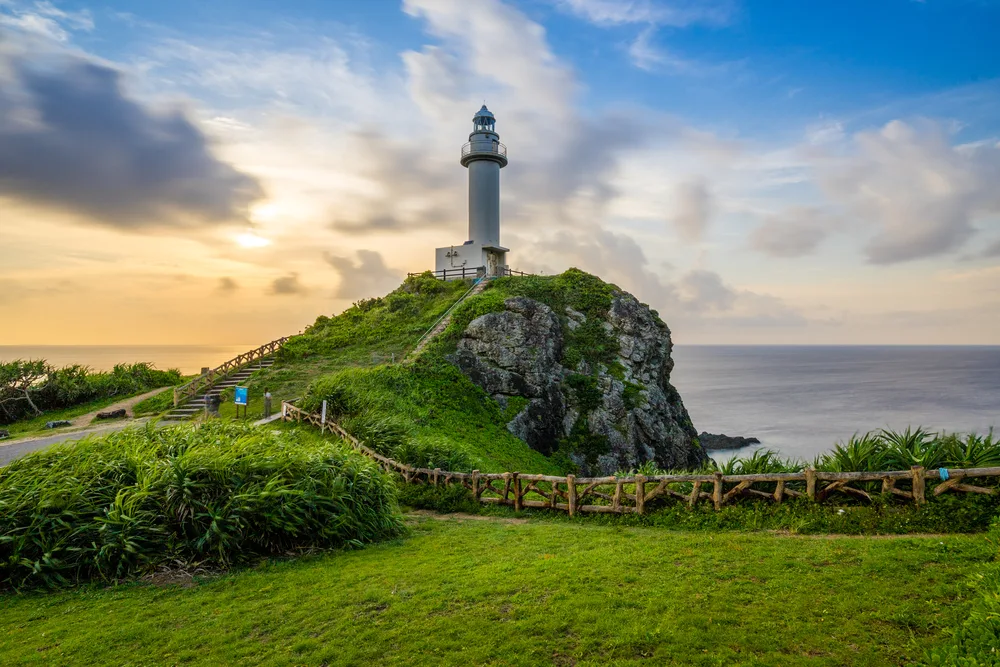
K.Arjana/Shutterstock
Still unsure about the best time to visit Okinawa? Take a look at our summary of the weather and climate by month below:
January
Winter temperatures in Okinawa range from 60-68°F. It’s a mild season, ideal for exploring historical sites like Shuri Castle, enjoying traditional Okinawan cuisine, and attending cultural events.
February
Similar to January, February maintains cool temperatures between 60-68°F. Visitors can explore the Okinawa Churaumi Aquarium, relax on the beautiful beaches, and experience the unique Okinawan arts and crafts.
March
As spring begins, temperatures range from 62-71°F. March is perfect for outdoor activities like hiking in the Yanbaru Forest or participating in the Naha Dragon Boat Race.
April
Spring continues with temperatures between 66-75°F. April is an ideal time for cherry blossom viewing at Nakijin Castle Ruins and exploring the vibrant markets and festivals.
May
May sees temperatures ranging from 71-80°F. It’s a great month for water activities like snorkeling and diving in the clear blue waters surrounding the Kerama Islands.
June
Summer arrives with temperatures between 75-84°F. June is perfect for enjoying the pristine beaches, exploring the Okinawa Prefectural Peace Memorial Museum, and attending traditional Eisa dance performances.
July
July maintains warm temperatures from 77-86°F. It’s a popular month for water sports, beach festivals, and experiencing the vibrant nightlife in Naha.
August
Temperatures in August range from 78-87°F. It’s an ideal time for marine activities like whale watching, visiting Okinawa’s historical sites, and enjoying traditional Okinawan cuisine.
September
As fall begins, temperatures range from 77-86°F. September offers a pleasant transition, with opportunities for hiking in the Okinawa Mountains and exploring local markets.
October
Fall temperatures range from 73-82°F. October is perfect for cultural experiences like the Tug-of-War Festival, exploring the Okinawa Prefectural Museum & Art Museum, and enjoying the autumn foliage.
November
November sees temperatures between 68-77°F. It’s a great month for outdoor activities like kayaking in the mangroves of Iriomote Island and visiting historical landmarks.
December
Winter returns with temperatures ranging from 64-72°F. December brings a festive atmosphere to Okinawa, with holiday illuminations, traditional Ryukyu dance performances, and the chance to enjoy the island’s unique winter charm.
Things to Consider
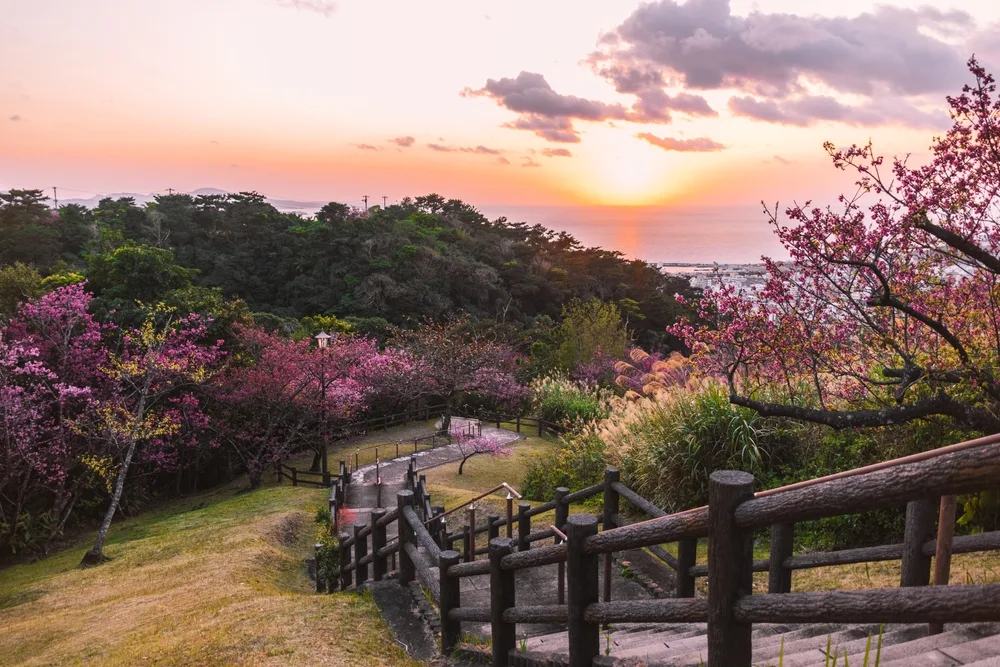
Wirestock Creators/Shutterstock
Okinawa is majestic even if you go without a plan or know nothing about it, but to ensure you have a stress-free stay and make the most of your trip, consider the following things:
- Invest in passes such as the Okinawa Fun Pass, the Okinawa Main Island Enjoy Pass, or the Churaumi TokuToku 5 Pass. Great value for money!
- While renting a car may not be expensive, the tolls can get quite pricey, so avoid the expressway whenever possible. Also, if you’re staying in a hotel, check whether there’s free parking, as not all of them provide it. Parking can also get expensive, so double-check such matters before you arrive to avoid unpleasant situations.
- Most markets have microwaves at the entrance or near the exits so that buyers can heat their takeaway food. Pretty thoughtful, don’t you think?
- Although most credit cards and contactless payment methods are accepted in Okinawa’s urban region, note that smaller remote areas accept only cash.
- Make sure your devices’ chargers are compatible with the Japanese voltage requirements and electrical sockets: the plugs are A type, the frequency 60Hz, and the voltage 100V.
So, What’s the Best Time to Visit Okinawa?
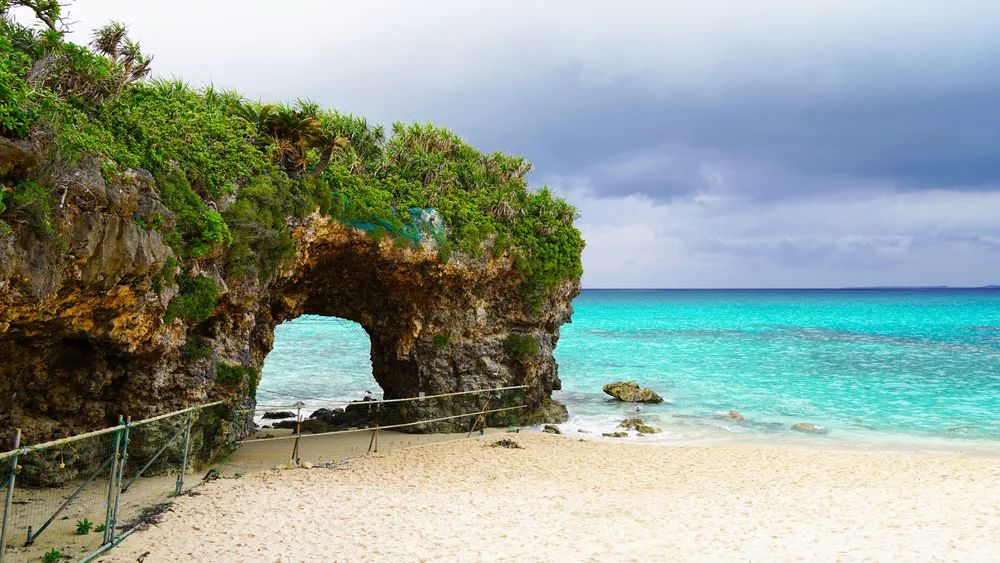
Artem Pachkovskyi/Shutterstock
We covered a lot of Okinawa-related particulars in this detailed guide, so let’s briefly recap the most important pieces of information to help you organize your trip in a way that works for you.
All in all, the best time to visit Okinawa is in March, April and/or October. Okinawa is buzzing with events, crowds head to the beaches in summer, and the temperatures allow for any recreational activity you can think of (apart from the heavy rain periods).
Whenever you decide to visit Okinawa, you’re in for a wild island ride, and the seasons’ diverse climate and enticing temperatures will certainly reveal a charm on their own. Happy travels!



